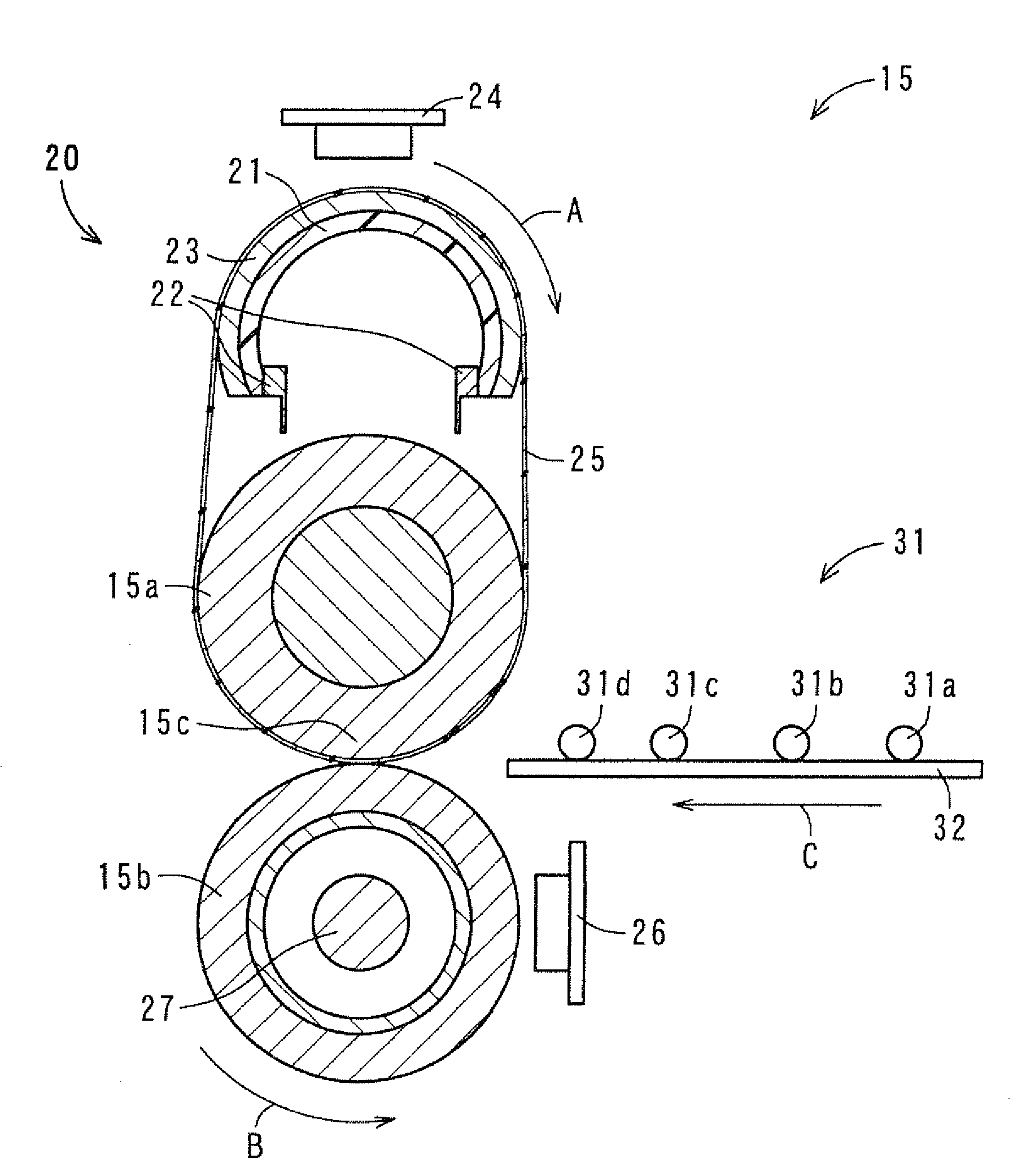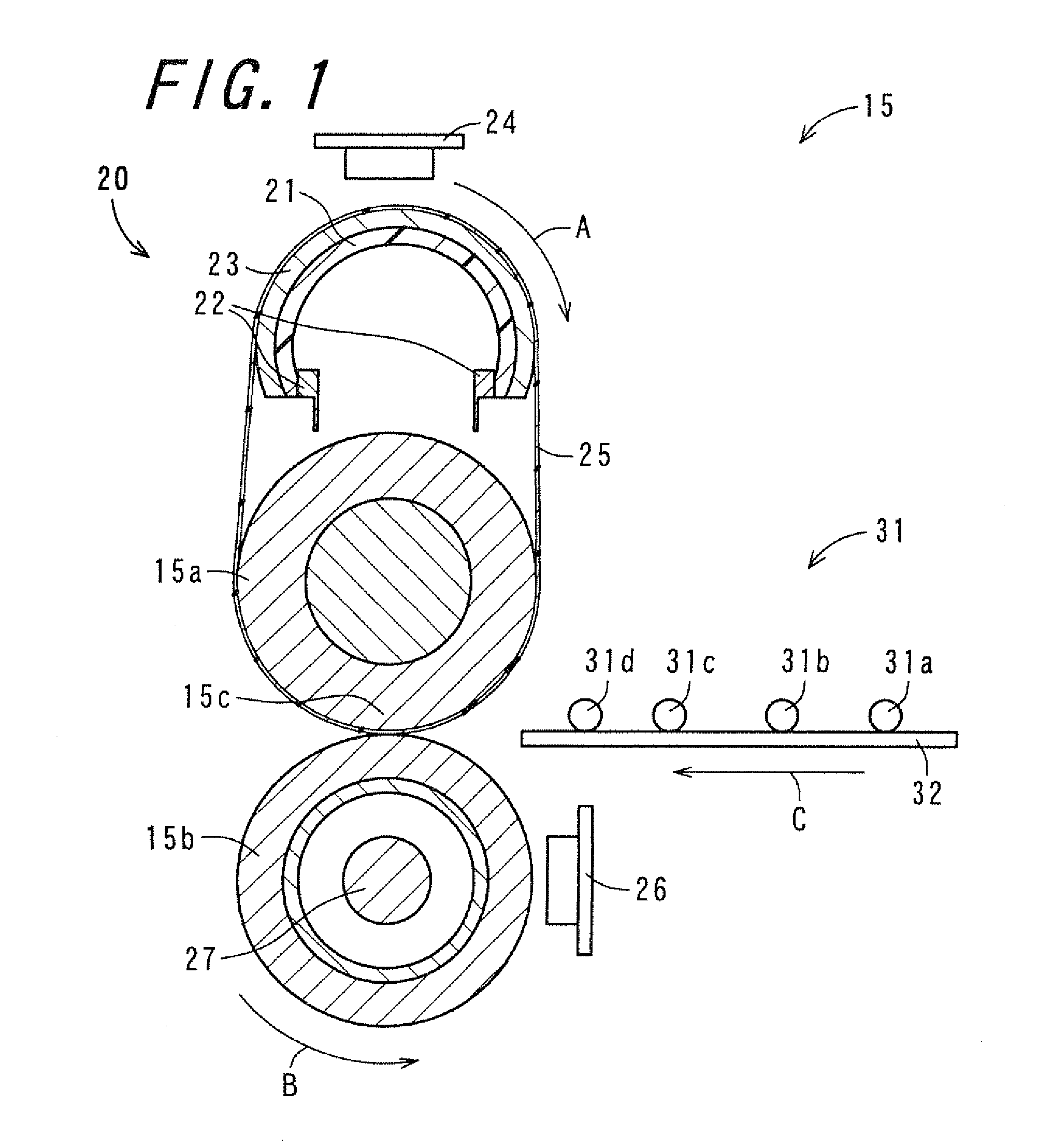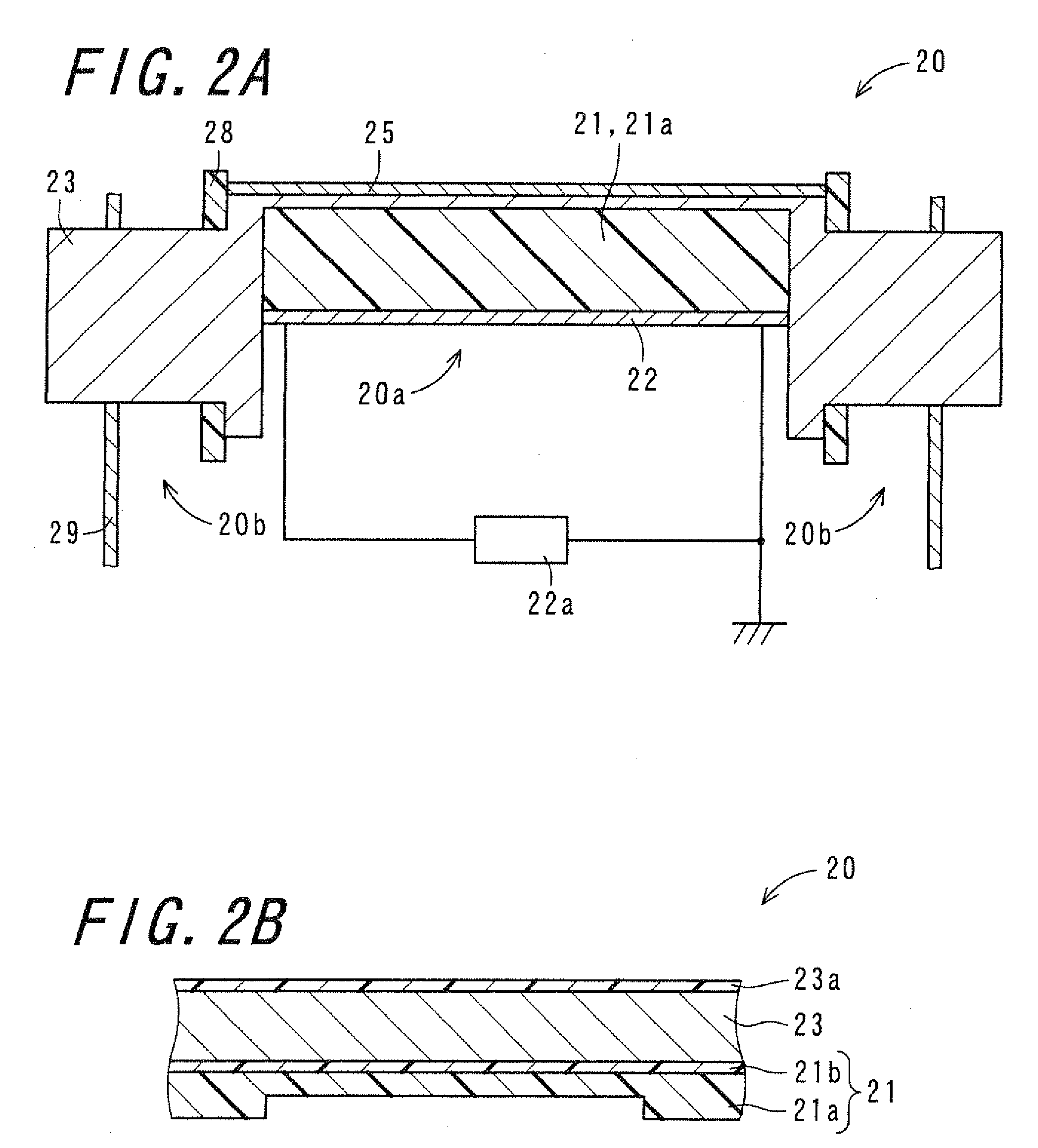Fixing device and image forming apparatus including the same
- Summary
- Abstract
- Description
- Claims
- Application Information
AI Technical Summary
Benefits of technology
Problems solved by technology
Method used
Image
Examples
example 1
[0110]A fixing device used in Example 1 was the above-described fixing device 15. The detailed condition in Example 1 was as follows.
[0111]
[0112]Used was a fixing roller that had a diameter of 30 mm in which stainless steel having a diameter of 15 mm was used as a core metal and silicone sponge rubber having thickness of 7.5 mm was used as an elastic layer.
[0113]
[0114]Used was a pressure roller that had a diameter of 30 mm and was made of silicone solid rubber, in which PFA tube having thickness of 30 μm was used as a release layer and a heater lamp having a rated power of 400 W was disposed inside.
[0115]
[0116]Used was a fixing belt in which polyimide having thickness of 70 μm was used as a belt substrate, silicone rubber having thickness of 150 μm was used as an elastic layer, and PFA tube having thickness of 30 μm was used as a release layer, and whose winding angle θ was 185°.
[0117]
[0118]A polyphenylene sulfide (PPS) collar having an inner diameter of 20 mm, a diameter of 32 mm, ...
example 2
[0135]A fixing device used in Example 2 was the above-described fixing device 35. Example 2 was conducted in the similar manner to Example 1 except that the heating member was different.
[0136]
[0137]A polyimide layer of 30 μm as an insulating layer was formed on an outer surface of a substrate made of an aluminum pipe having thickness of 1 mm and provided with steps at both ends thereof, and on the outer surface thereof, a composite material in which graphite particles were dispersed in a silicone resin (3.3 parts by weight of graphite particles relative to 1 part by weight of a silicone resin) was formed as a heat generating layer so that an area of a center part in the longitudinal direction had thickness of 0.5 mm and 30 mm of both ends thereof had thickness of 0.6 mm. In addition, as a coat layer of the outermost layer, a fluorine resin having thickness of 20 μm was coated. The others were similar to Example 1.
[0138]Heat generated from the planar heat generating element of Exampl...
example 3
[0140]A fixing device used in Example 3 was the above-described fixing device 45. Example 3 was conducted in the similar manner to Example 1 except that the heating member was different.
[0141]
[0142]The heating member was obtained by shaping, as a heat generating layer, semiconductor ceramics based on barium titanate with Curie temperature of 250° C. into a semicircular roller shape so as to have an external diameter of 28 mm, thickness of 2 mm, and a length in an axial direction of 350 mm; and providing, on the surface of which, a coat layer made of a fluorine resin having thickness of 20 μm used in Example 1. At this time, thickness of the heat generating layer was set so that both ends in a longitudinal direction thereof had larger thickness than that of a center part thereof, similarly to Example 1. Except for the heating members the others were similar to Example 1.
[0143]In the heating member of Example 3, heat generated from the heat generating layer was not transmitted indirec...
PUM
 Login to View More
Login to View More Abstract
Description
Claims
Application Information
 Login to View More
Login to View More - R&D
- Intellectual Property
- Life Sciences
- Materials
- Tech Scout
- Unparalleled Data Quality
- Higher Quality Content
- 60% Fewer Hallucinations
Browse by: Latest US Patents, China's latest patents, Technical Efficacy Thesaurus, Application Domain, Technology Topic, Popular Technical Reports.
© 2025 PatSnap. All rights reserved.Legal|Privacy policy|Modern Slavery Act Transparency Statement|Sitemap|About US| Contact US: help@patsnap.com



